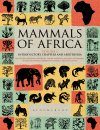About this book
Available again after an absence of several years, this is an unmodified reprint of this benchmark encyclopedia that was originally published in 2013.
Mammals of Africa contains the very latest information and detailed discussion of the morphology, distribution, biology and evolution (including reference to fossil and molecular data) of every currently recognized species of African land mammal.
With more than 1160 species and 16-18 orders, Africa has the greatest diversity and abundance of mammals in the world. The reasons for this and the mechanisms behind their evolution are given special attention in Mammals of Africa.
Each volume follows the same format, with detailed profiles of every species and higher taxa. Mammals of Africa includes some 660 colour illustrations by Jonathan Kingdon. Diagrams, schematic details and line drawings of skulls and jaws are by Jonathan Kingdon and Meredith Happold. Every species also includes a detailed distribution map. Extensive references alert readers to more detailed information. Each volume is edited by different editors.
Mammals of Africa Volume I: Introductory Chapters and Afrotheria comprises eight introductory chapters covering topics such as evolution, geography and geology, biotic zones, classification, behaviour and morphology. The rest of this volume is devoted to the Afrotheria, a grouping that comprises six orders and 49 species; these are the hyraxes, elephants, dugong, manatees, otter-shrews, golden-moles, sengis (elephant-shrews) and aardvark. Volume I is edited by Jonathan Kingdon, David Happold, Michael Hoffman, Thomas Butynski, Meredith Happold, and Jan Kalina.
Mammals of Africa Volume II: Primates is devoted to the order Primates, and includes the great apes, Old World monkeys, lorisids and galagos. Using the taxonomy adopted for Mammals of Africa, the four families represented comprise 25 genera and 93 species. A new species of monkey described in 2011 brings the total to 94, and this is briefly mentioned. Volume II is edited by Thomas Butynski, Jonathan Kingdon, and Jan Kalina.
Mammals of Africa Volume III: Rodents, Hares and Rabbits contains profiles of 395 species of rodents, comprising the squirrels, dormice, jerboas, blind mole-rats, African root-rats, pouched rats and mice, swamp mouse, climbing mice, fat mice, white-tailed rat, rock mice, voles, maned rat, spiny mice, brush-furred mice, gerbils, jirds, taterils, African forest mouse, rats and mice, vleirats, whistling rats, anomalures, springhares, gundis, African mole-rats, porcupines, noki (dassie rat), cane rats, and coypu. This volume concludes with 13 species of hares and rabbits and is edited by David Happold.
Mammals of Africa Volume IV: Hedgehogs, Shrews and Bats profiles 156 species of insectivores, comprising the hedgehogs and shrews. The rest of the volume is devoted to the 224 species of African bats. The latter are divided into nine families, namely fruit bats, horseshoe bats, leaf-nosed bats, false vampire bats, mouse-tailed bats, sheath-tailed bats, slit-faced bats, free-tailed bats, and vesper bats. Volume IV is edited by Meredith Happold and David Happold.
Mammals of Africa Volume V: Carnivores, Pangolins, Equids and Rhinoceroses comprises 83 species of carnivores, and includes jackals, wolves, dogs, foxes, weasels, polecats, striped weasels, zorilla, otters, ratel, fur seals, monk seals, palm civet, cats, genets, linsangs, African civet, hyaenas, aardwolf, and mongooses. The volume is completed with profiles of four pangolins, four zebras, and two rhinoceroses, and is edited by Jonathan Kingdon and Michael Hoffmann.
Mammals of Africa Volume VI: Pigs, Hippopotamuses, Chevrotain, Giraffes, Deer and Bovids, the last volume in Mammals of Africa, comprises a single order, currently subdivided into three suborders, containing the pigs, hippopotamuses, chevrotains, giraffe, okapi, deer, buffalos, spiral-horned antelopes, dwarf antelopes, duikers, grysboks, beira, dik-diks, gazelles, klipspringer, oribi, reduncines, impala, alcelaphines, horse-like antelopes, sheep, and goats. This volume contains a total of 98 species profiles and is edited by Jonathan Kingdon and Michael Hoffmann.
Contents
Volume I: Introductory Chapters and Afrotheria (352pp; edited by Jonathan Kingdon, David Happold, Michael Hoffman, Thomas Butynski, Meredith Happold, and Jan Kalina)
Volume II: Primates (560 pp; edited by Thomas Butynski, Jonathan Kingdon, and Jan Kalina)
Volume III: Rodents, Hares and Rabbits (784 pp; edited by David Happold)
Volume IV: Hedgehogs, Shrews and Bats (800 pp; edited by Meredith Happold and David Happold)
Volume V: Carnivores, Pangolins, Equids and Rhinoceroses (560 pp; edited by Jonathan Kingdon and Michael Hoffmann)
Volume VI: Pigs, Hippopotamuses, Pigs, Deer, Giraffe and Bovids (704 pp; edited by Jonathan Kingdon and Michael Hoffmann)
Customer Reviews
Biography
Jonathan Kingdon (Department of Zoology, University of Oxford) was born in Tanzania and has spent much of his life in Africa. Over the course of a long career he has achieved acclaim as both a leading academic and a prominent artist. He is also the author of The Kingdon Field Guide to African Mammals and The Kingdon Pocket Guide to African Mammals.
David Happold (School of Botany and Zoology, Australian National University) has held academic positions at the University of Khartoum (Sudan), University of Ibadan (Nigeria), University of Malawi, and The Australian National University.
Thomas M. Butynski (Zoological Society of London/King Khalid Wildlife Research Centre) is a conservationist and ecologist who has worked in Africa for 35 years, mostly in Botswana, Kenya, Uganda, and Equatorial Guinea.
Michael Hoffmann (International Union for Conservation of Nature – Species Survival Commission) is trained as a mammalogist at the University of Pretoria, South Africa, and the University of Oxford, UK. He has since moved into the field of international biodiversity conservation.
Meredith Happold (School of Botany and Zoology, Australian National University) spent several years studying bats in Nigeria. Since 1977 she has held a Visiting Fellowship at the Australian National University and her research has focused on African bats.
Jan Kalina (Soita Nyiro Conservancy, Kenya) is a conservation biologist. Her work with mammals began at Wildlife Conservation Society’s Bronx Zoo in New York and at Colorado State University. She is currently joint-owner of Soita Nyiro Conservancy in Laikipia, Kenya.

































![How to Find and Identify Mammals [Revised Edition]](http://mediacdn.nhbs.com/jackets/jackets_resizer_medium/21/210208.jpg?height=150&width=106)

















